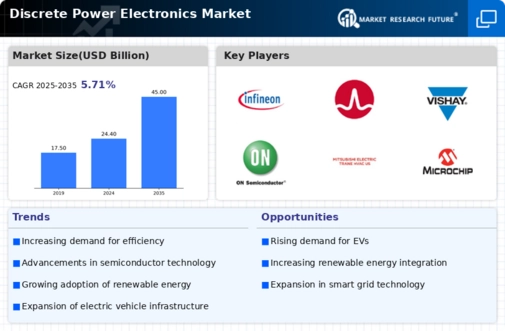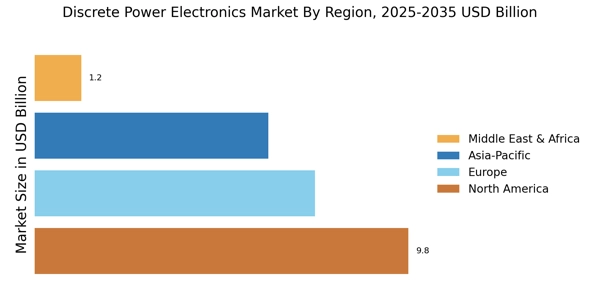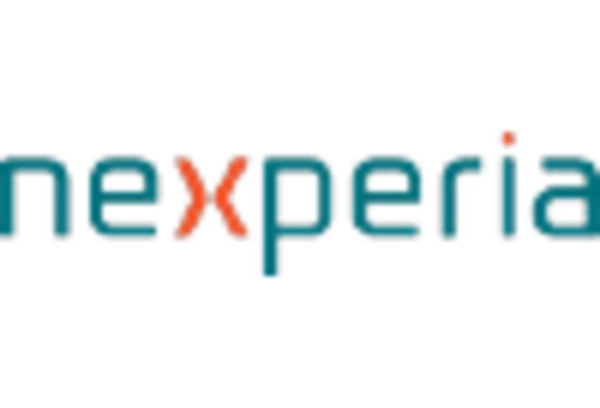Growing Adoption of Smart Grids
The increasing implementation of smart grid technologies is driving the Discrete Power Electronics Market. Smart grids enhance the efficiency and reliability of electricity distribution, necessitating advanced power electronics for optimal performance. The integration of renewable energy sources into these grids requires sophisticated power management solutions, which are often provided by discrete power electronics. As of 2025, the market for smart grid technologies is projected to reach approximately USD 100 billion, indicating a robust demand for discrete power electronics to support this growth. This trend suggests that manufacturers in the Discrete Power Electronics Market must innovate to meet the evolving requirements of smart grid applications.
Surge in Electric Vehicle Production
The rapid expansion of the electric vehicle (EV) market is significantly influencing the Discrete Power Electronics Market. As automakers increase production to meet rising consumer demand, the need for efficient power electronics becomes paramount. Discrete power electronics play a crucial role in managing power conversion and distribution within EVs, enhancing performance and range. In 2025, the EV market is expected to surpass 30 million units sold, creating substantial opportunities for discrete power electronics manufacturers. This surge indicates a potential for growth in the Discrete Power Electronics Market, as companies strive to develop innovative solutions tailored for the automotive sector.
Rising Demand for Energy Storage Solutions
The escalating need for energy storage solutions is a significant driver for the Discrete Power Electronics Market. As energy consumption patterns evolve, the demand for efficient storage systems to balance supply and demand is increasing. Discrete power electronics are critical in managing the charging and discharging processes of energy storage systems, such as batteries and supercapacitors. The energy storage market is projected to reach USD 200 billion by 2025, driven by applications in renewable energy integration and grid stability. This growth presents a compelling opportunity for the Discrete Power Electronics Market, as manufacturers develop advanced power electronics to enhance the performance and reliability of energy storage solutions.
Increased Focus on Renewable Energy Integration
The transition towards renewable energy sources is a key driver for the Discrete Power Electronics Market. As countries aim to reduce carbon emissions, the integration of solar, wind, and other renewable sources into the energy mix is becoming more prevalent. Discrete power electronics are essential for managing the conversion and distribution of energy generated from these sources. The market for renewable energy is projected to grow significantly, with investments expected to reach USD 1 trillion by 2025. This growth presents a substantial opportunity for the Discrete Power Electronics Market, as companies develop technologies that facilitate the efficient integration of renewable energy into existing grids.
Technological Advancements in Power Electronics
Ongoing technological advancements in power electronics are propelling the Discrete Power Electronics Market forward. Innovations such as wide bandgap semiconductors, which offer superior efficiency and thermal performance, are becoming increasingly prevalent. These advancements enable the development of smaller, lighter, and more efficient power electronic devices, which are essential for various applications, including industrial automation and consumer electronics. The market for power electronics is anticipated to grow at a compound annual growth rate of over 7% through 2025, indicating a strong demand for innovative solutions within the Discrete Power Electronics Market. This trend suggests that companies must invest in research and development to remain competitive.
















Leave a Comment